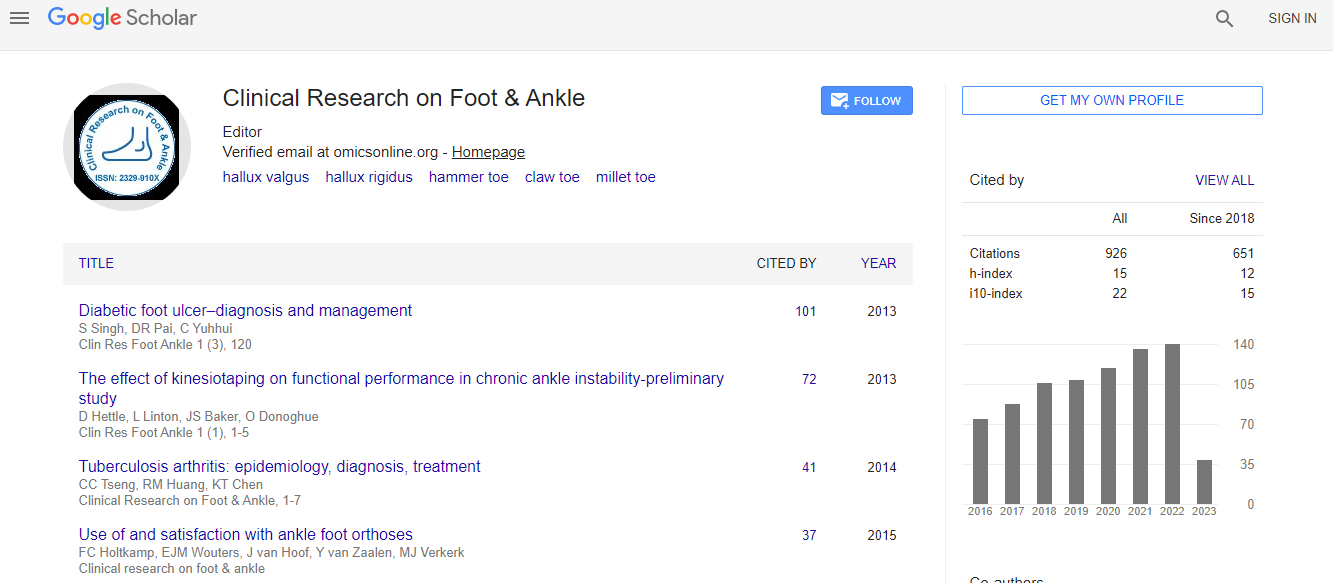Review Article
The Incidence of Asymptomatic Onychomycosis in Diabetes Mellitus
| Rathur HM1, Housley A2 and Rajbhandari SM1,3* | |
| 1Diabetes Unit, Lancashire Teaching Hospital, Chorley, United Kingdom | |
| 2Podiatry Department, Lancashire Care Foundation Trust, United Kingdom | |
| 3University of Central Lancashire, United Kingdom | |
| Corresponding Author : | Satyan M Rajbhandari Honorary Clinical Professor University of Central Lancashire Tel: 441257 245028 Fax: 441257 245208 E-mail: Satyan.rajbhandari@lthtr.nhs.uk |
| Received: July 14, 2015 Accepted: August 27, 2015 Published: August 30, 2015 | |
| Citation: Rathur HM, Housley A, Rajbhandari SM (2015) The Incidence of Asymptomatic Onychomycosis in Diabetes mellitus. Clin Res Foot Ankle 3:172. doi:10.4172/2329-910X.1000172 | |
| Copyright: © 2015 Satyan M Rajbhandari, et al. This is an open-access article distributed under the terms of the Creative Commons Attribution License, which permits unrestricted use, distribution, and reproduction in any medium, provided the original author and source are credited. | |
| Related article at Pubmed, Scholar Google | |
Abstract
In people with diabetes mellitus (DM), fungal infection is believed to occur more frequently. Toenail onychomycosis (TOM), a common type of fungal infection is asymptomatic in most cases. In order to study the incidence and prevalence of previously undiagnosed TOM in a population of subjects with DM attending for routine annual foot screening, nail plate and sub-ungual tissue samples were collected for microbiological analysis. Examining clinicians also made a graded visual diagnosis of onychomycosis at the same visit. Various blood samples markers of diabetes and its associated complications were also reviewed. 88 consecutive subjects with diabetes [mean age 78.4 (± SD 10.2) and duration 7.9 (± SD 8.1) years] were recruited to the study, and 29.5% had a positive (laboratory) diagnosis of TOM. There was no correlation with the incidence of TOM and duration of diabetes, other demographic data, or various biochemical parameters, but there was a trend for association of TOM to reduced sensation in healthy people with diabetes. Clinician were making more accurate (82%) diagnosis of TOM than that of healthy nail plate (53.8%) when compared with microbiological studies. As TOM is very common and the benefit of its treatment has not been confirmed, the value of routine laboratory screening for TOM as part of annual assessment of diabetes is not established. Our study shows that TOM is very common so further studies are needed to see if screening and treatment of TOM will prevent future secondary foot and leg infection in people with diabetes.

 Spanish
Spanish  Chinese
Chinese  Russian
Russian  German
German  French
French  Japanese
Japanese  Portuguese
Portuguese  Hindi
Hindi 
